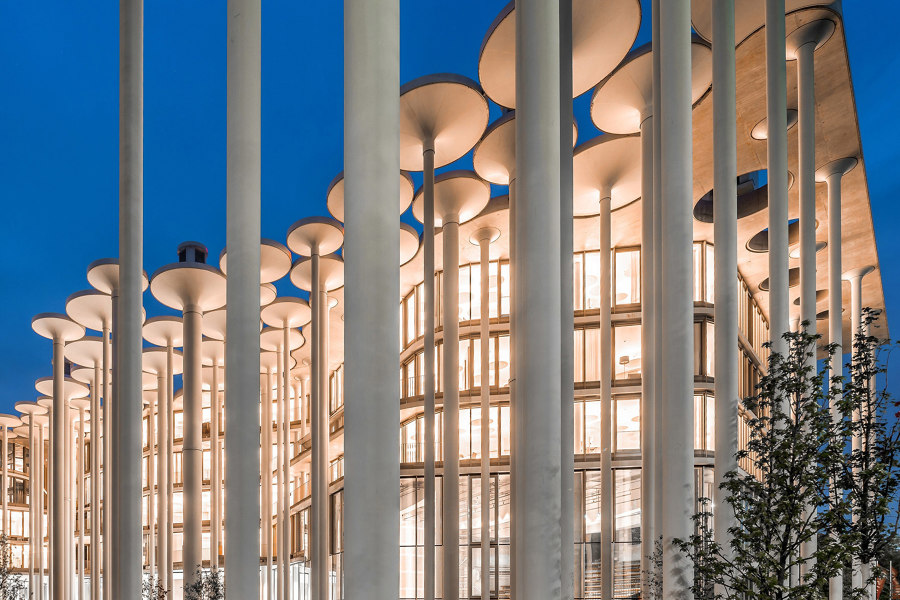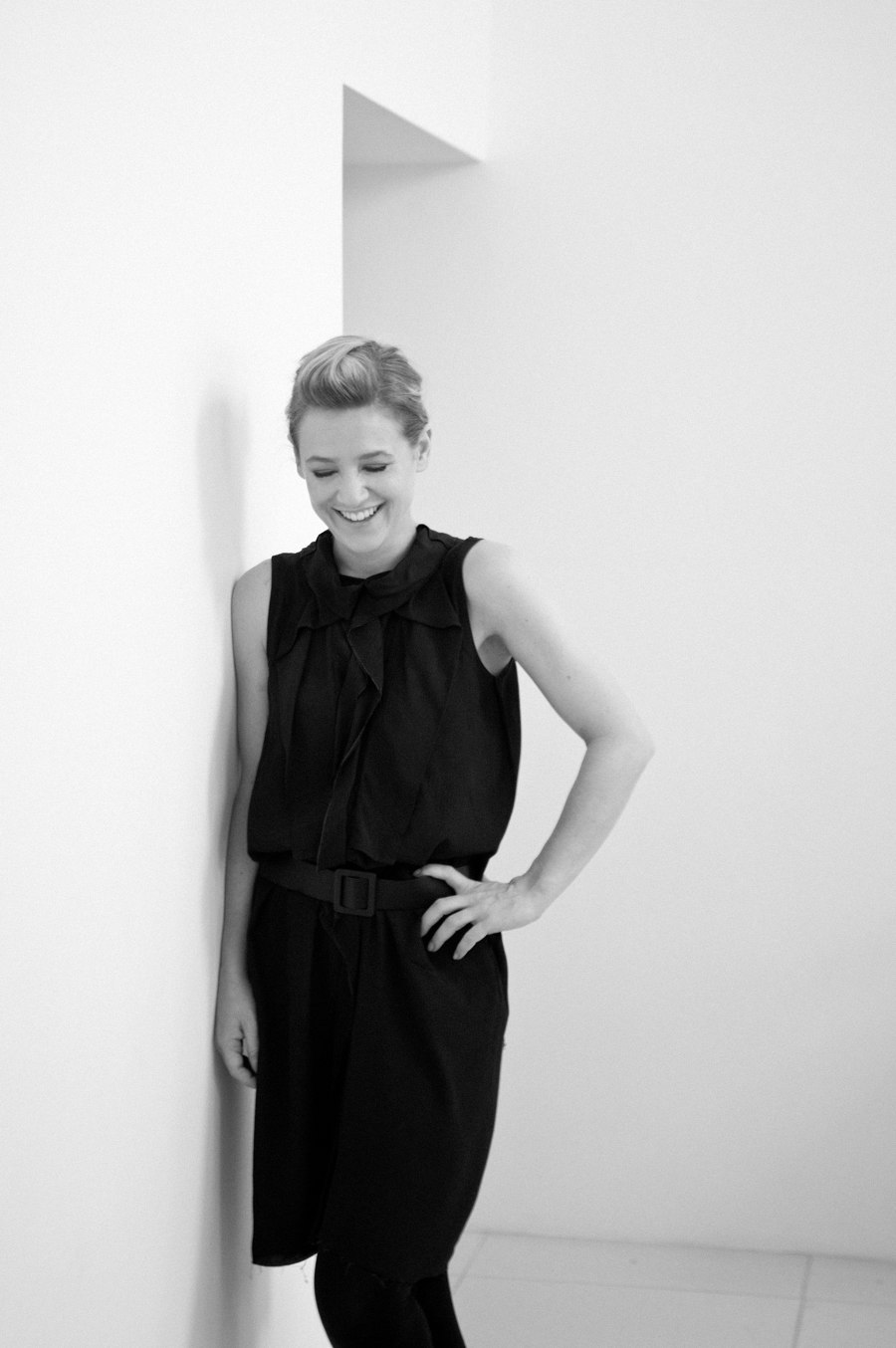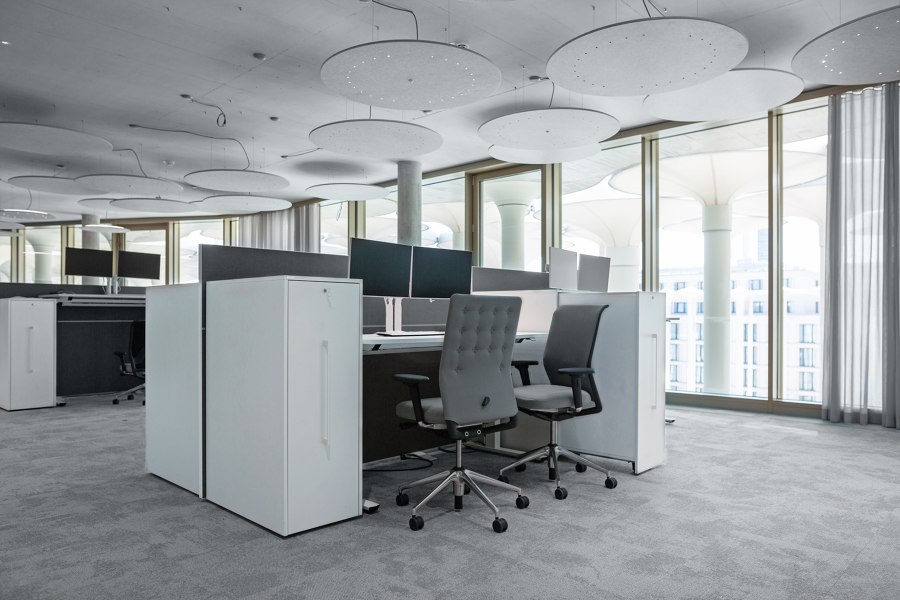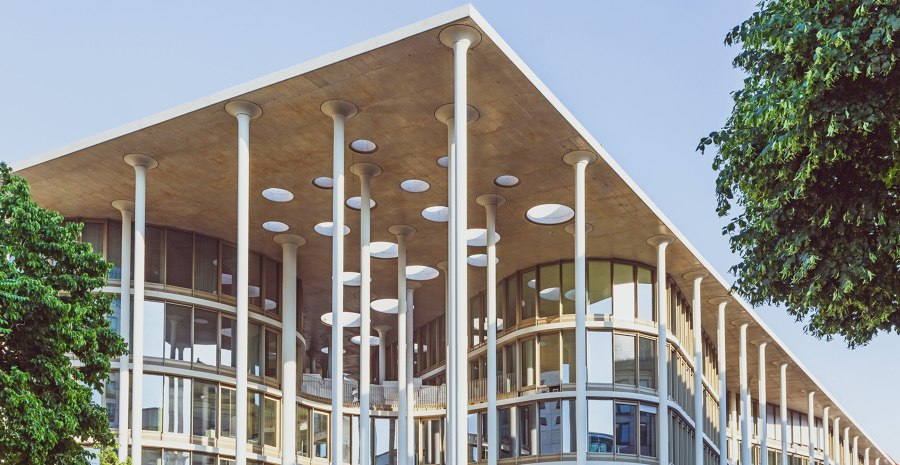The future is hybrid – PALMBERG intelligence series
Historia de la marca de Libby Sellers
Schönberg, Alemania
02.12.21
The PALMBERG Workplace Intelligence Series explores the rapidly evolving landscape of work in terms of both user behaviour and office design. Sponsored by leading German office-furniture manufacturer PALMBERG, which has for decades developed products that respond to new research in work culture, it gives a platform to expert thinkers whose insight and commentary help shape the debate around work in the 21st century.
Flexible PALMBERG office furniture was selected in SAB’s (Saxony AufbauBank) new bank and public forum building. Concept and realisation: Deutsche Werkstätten, Leipzig. Photos: Strohhut Pictures, Leipzig

Flexible PALMBERG office furniture was selected in SAB’s (Saxony AufbauBank) new bank and public forum building. Concept and realisation: Deutsche Werkstätten, Leipzig. Photos: Strohhut Pictures, Leipzig
×Water cooler moment history was made on November 21, 1980, when an estimated 83 million people tuned in to find out ‘Who Shot J.R?’ A session of Turkish Parliament was even allegedly suspended so that legislators could get home in time for the big reveal. As the highest-rated single television episode of its time, Dallas was an international conversational necessity, prompting office sweepstakes and corridor speculation as to ‘who done it.’ Fast-forward forty-plus years, and while the actual water cooler may have faded from collective memory, its value as both facilitator of, and signifier for, such collective experiences has secured its place in office lore.
Libby Sellers is a design writer, curator and consultant. Since the publication of her last book, Women Design (Frances Lincoln, 2018), Libby has written and lectured extensively on the gender bias in design

Libby Sellers is a design writer, curator and consultant. Since the publication of her last book, Women Design (Frances Lincoln, 2018), Libby has written and lectured extensively on the gender bias in design
×As the office landscape is reconfigured in response to the pandemic – with its one-way traffic systems, socially-distanced communal areas, desk dividers and automated touch points – all designed to keep us employed safely (and safely employed), what now for the water cooler moment? Without wishing to overstate the importance of corridor collisions, where are the sites for camaraderie, development and expression via personal engagement when we’re all so isolated? Beyond the highly effective, yet often scripted, options afforded through online and virtual technologies, can the physical office space still be a beacon of collaboration, community and sociability?
Without wishing to overstate the importance of corridor collisions, where are the sites for camaraderie, development and expression via personal engagement when we’re all so isolated?
It is important to be mindful here that the rapid and enforced changes experienced over the last 18 months were due to a virus, not our colleagues or workplace. Yet survey after survey reveals a shifting mindset that favours home or remote working for all the benefits it provided when mandatory. An uncomfortable truth lurking between these two points is an acknowledgement of the pandemic’s role in exacerbating existing issues. Before creating purposeful environments which both encourage and enable everybody to mix, thrive and be productive, there are other problems that need urgent attention.
The bank’s offices are designed with flexibility a priority, promoting communication and creating future-ready room types. Concept and realisation: Deutsche Werkstätten, Leipzig. Photos: Strohhut Pictures, Leipzig

The bank’s offices are designed with flexibility a priority, promoting communication and creating future-ready room types. Concept and realisation: Deutsche Werkstätten, Leipzig. Photos: Strohhut Pictures, Leipzig
×Most forums on the psychological impact of remote working (forced or otherwise) conclude that people need people. Concomitantly, our increased understanding of neurodiversity, met by the prolonged inequity afforded to different genders, ethnicities and age and economic groups, have highlighted the extreme shortcomings (indeed, failings) of a one-size-fits-all solution to office design. And as Caroline Criado Perez eloquently concludes in Invisible Women, the proportions of that ‘one size’ – from uniform furniture to air-cooling systems – have traditionally been based on an abled-bodied, self-assured, Caucasian male.
Even if hybrid working does not become the future, or is unattainable for every organisation, perhaps the real lesson here is the need for hybrid thinking
We have been presented with a unique opportunity to rethink the status quo. Enlightened HR professionals, Wellness Directors and plain old Office Managers have already initiated group- or system-wide transitions that offer a flexible balance between the virtual and the real, the remote and onsite. Hybrid scenarios that oscillate between home, third space and office for concentrated tasks, teamwork and face-to-face communication as required. While the ratio we use these scenarios might fluctuate, they go a long way in addressing the need for flexibility, empowerment and community. Is this enough though? Or will it simply spread the issues across different locations?
It may have taken a worldwide pandemic to ignite change, but now we’ve dipped our collective toes into the warm hybrid workplace waters, what’s next? Concept and realisation: Deutsche Werkstätten, Leipzig. Photos: Strohhut Pictures, Leipzig

It may have taken a worldwide pandemic to ignite change, but now we’ve dipped our collective toes into the warm hybrid workplace waters, what’s next? Concept and realisation: Deutsche Werkstätten, Leipzig. Photos: Strohhut Pictures, Leipzig
×Even if hybrid working does not become the future, or is unattainable for every organisation, perhaps the real lesson here is the need for hybrid thinking – a flexible and agile approach to office space that enables and activates all the same benefits and liberties of remote working, while acknowledging everyone’s needs are equally hybrid and diverse. And for these solutions, we need look no further than our own preferred WFH moments from the last 18 months – working in private or sheltered spaces or, conversely, in the heart of the action, natural and personally-controllable light and ventilation, onsite childcare, safer commutes, a sense of community through communal meals and a chance for all voices to be heard in group meetings. All that needs happen is for empowered employees to keep adding to this list and committed employers to act on it.
© Architonic






